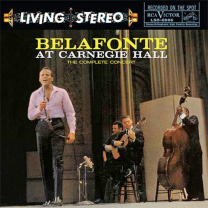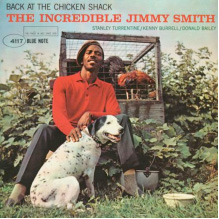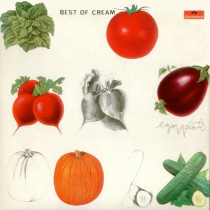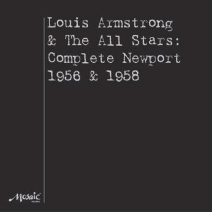Harry Belafonte Belafonte At Carnegie Hall The Complete Concert Analogue Productions 200g 2LP

Mastered by Ryan Smith at Sterling Sound from the original 3-track analog tapes
Plating by Gary Salstrom
I didn’t list all the cuts on these two LPs, heck most everyone knows this recording. It’s an LP with one of the most unusual stories around. It was released as an RCA “Living Stereo” recording in 1959. The performance is classic Harry Belafonte performed for an enthusiastic audience at Carnegie Hall. There are two reasons it continues to captivate listeners some 55 years later. First, the music is great; second the recording engineer magically captured the live experience. It’s in no way an audiophile recording even if it is on most audiophile lists. What is magical here is not the sound but the way this LP lets you feel like you are in Carnegie Hall. Please note I said feel like you are there; I did not say it sounds the same as live music.
Stereo recordings were still the exception to the rule of mono in 1959. Thank goodness the temptation to show off two channels with ‘pingpong’ sound effects was resisted. This recording — like many of the early classical recordings from RCA and Mercury — stunningly gets the soundstage right.
Still the question that needs to be asked, WHY? Why do people still love this LP and why do we need another reissue of it? Well, I’m not sure we do, but this is surely an outstanding reissue. I have never owned an original of this recording. I have owned some fairly early pressings that were just too noisy. Up until now there has been a clear winner when it comes to versions of this recording, the Classic Records eight LP box set. The problem is that if you can find one it costs a small fortune and then there is the fact that you have to put eight records on and off the turntable to listen to the total performance.
So how does this Analogue Productions’ reissue compare? It easily bettered all the other reissues I have except the 45rpm Classic Records. Does it come close to that latter one? Well, yes and no. It gets everything right that the Classic does, but somehow the music still doesn’t flow like it does on the Classic. The Classic is better in ways that are hard to put in words. The one word that did come to mind is that the Classic sounds more fluid, but as I write that I hear some of you saying, “what the heck does that mean?” My answer is “that’s the best I can describe it.” If you don’t have the Classic Records 45rpm box set then this is the one to get. It’s that simple.
JIMMY SMITH BACK AT THE CHICKEN SHACK –
ANALOGUE PRODUCTIONS/BLUE NOTE 180g 45rpm 2LPs

Mastered by Kevin Gray & Steve Hoffman at AcousTech
Pressed by RTI
Tracks:
1. Back At The Chicken Shack
2. When I Grow Too Old To Dream
3. Minor Chant
4. Messy Bessie
Musicians:
Jimmy Smith, organ
Stanley Turrentine, tenor saxophone
Kenny Burrell, guitar
Donald Bailey, drums
If you don’t have any recordings of jazz organist Jimmy Smith, this recording would be a good place to start. It is one of his classic Blue Note sessions. It is also noteworthy as the first to draw attention to tenor saxophonist Stanley Turrentine. It was recorded in 1960 and this quartet for me, plays a brand of funky, soulful jazz in way that is pure fun to listen to. I love the interplay of the organ with the other instruments.
Not only are the music and performances great, so is the recording. Which brings us to the question of this reissue. I already own a very early Blue Note pressing of this LP and I love it. Still, I have cleaned it on my Clearaudio Professional Double Matrix and on one of the new ultrasonic cleaners and it’s still fairly noisy. So I thought surely as much as I love the sound of most 45rpm reissues this would be my answer.
Let me start by saying the vinyl is dead quiet, the music is both warm and clear. It has superb highs, midrange and the bass on both the organ and drums is wonderful. So, it would easy to say it’s the clear winner, but I can’t. I can say it is a winner and it’s a great choice if you don’t have an early Blue Note. The early Blue Note just has a little more life, the sax is fuller and more dynamic; the drums and cymbals have more air around them; and the organ also moves more air on the early Blue Note. The difference is there but while I am willing to put up with the noisier LP, you might not be. I can highly recommend this reissue and I’m glad to own both. If you’re will to work hard enough to hunt down an early Blue Note and probably pay more, I think you will find it was worth it. I’m not sure though having never heard a quite early pressing and you know what they say about a bird in the hand.
Best of Cream 180g LP

Side One:
1. Sunshine Of Your Love
2. Badge
3. Crossroads
4. White Room
5. SWLABR
6.
Side Two:
1. Born Under a Bad Sign
2. Spoonful
3. Tales of Brave Ulysses
4. Strange Brew
5. I Feel Free
Best of Cream is a compilation album of material from 1966 to 1968 released shortly after they disbanded. It was noteworthy as the first American album to contain Cream’s studio recording of “Spoonful.” Cream consisted of Eric Clapton, Jack Bruce and Ginger Baker, the group being joined here by Felix Pappalardi on piano and viola, and George Harrison on rhythm guitar and backing vocals on the song “Badge.”
It was released originally on Atco, since reissued on Polydor. It is a ten-track album featuring nearly all of Cream’s U.K. and U.S. single hits. I have the original Atco as well as a Polydor reissue. The problem with the Atco is — like many others — I played these rock LPs to death when I was in high school. To make it worse I played them on a Magnavox suitcase record player. The result is while I can hear that the Atco might be better it is so warn I can’t be sure.
This reissue surely sounds better than either of the issues I have. It’s pretty quiet and on most cuts sounds alive and powerful. There is a significant difference in sound between the cuts which is no surprise for a compilation album. Some of the cuts sound a little grungy and a few have some tape hiss, but that is to be expected from this LP. I mean you can only make a reissue as good as what you have to work with.
Please don’t let the problem with the mic scare you off, this is incredible stuff. Buy the LP for the music and the performance.
Louis Armstrong & The All Stars – Complete Newport 1956 & 1958 Mosaic’s Numbered Limited Edition 180g Stereo 4LP Box Set

This Mosaic box set is limited to 3500 individually numbered copies that were pressed at QRP. They were mastered from the original analog tapes. They come with a very nice booklet that includes rare photos of the two Newport Festival. The liner notes are written by world-renown Armstrong researcher Ricky Riccardi.
LP 1 and LP 2 side one seem to be the 1956 Newport Jazz Festival and the rest of the four LPs seem to me to be from the 1958 festival.
Well, what about the music and the sound. Let’s start with the music; can you spell FUN? Well, I can – – it’s these four LPs. I love the comical banter between Louie and different people on stage. In what was the third year of the Newport Jazz Festival, Armstrong was there with his All-Stars. The program selection is exactly what Louis did best; he played what the people wanted to hear. There are great performance of “Tin Roof Blues,” “My Bucket’s Got A Hole In It” – a New Orleans classic, “The Gypsy”, a really singing performance of “Perdido, a really boppin’ “Mop Mop”, and his current hit with “Mack The Knife.” In the midst of all this fun he found the time to feature the All-Stars (Ed Hall, Billy Kyle, Barrett Deems, Trummy Young, Dale Jones and Velma Middleton).
It was Columbia Records and producer George Avakian who thought of recording some of the Festival. The Voice of America was broadcasting the Festival by then and along with Columbia’s microphones captured many hours on tape, some of which to be released on LP. However, possibly because of a distorted VOA mic was combined with the fact that Columbia’s mic, the Armstrong portion of this concert lay dormant…until now. Through some careful work we now a have very listenable version of these great performances.
Without taking up a lot of space let me just say the 1958 festival recording is even better. The music is as good or better and the recording is much better. We are so lucky to have the original three track tapes to hear on these LPs. I want to thank the folks at Mosaic for bringing so much fun into my listening room.
What about the sound? Well, these aren’t audiophile recordings, no they are all about great music performed live. I should mention though that I wish most so called audiophile pressings were half as quiet as the vinyl was on these LPs. Back to the sound, well, especially on the first three sides you can hear some of the distortion of the faulty VOA mic, but not enough to keep you from feeling all the emotion in these performances. Because of this faulty mic the sound on the 1956 recording can be sort of a Jekyll and Hyde experience. Take “Mack the Knife,” this may be the worse track for the distortion of the solo mic (what a shame) yet when Louie isn’t singing the drums and the band sound incredibly good.
I should note that I had in house at the time I was reviewing these LPs the two best transformer based line stages as well as a world class tube and transistor preamp. The amount this distortion will bother you might be a way to know how good your preamp is. On two of these four, one of the transformer based and the transistor preamp, the distortion seemed to be much more irritating. None of this should take away from how great the band sounds and what a great recording this is overall. If you love Louie, you must have these two live recordings. If you can’t tell, I really like them!
- (Page 1 of 1)
